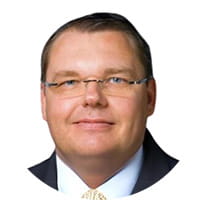Turning regulation into a driver of IT innovation in banking
July 17, 2025
Key takeaways
- Bank CIOs face a challenging balancing act between regulatory compliance, modernization and innovation, with up to 90% of budgets consumed by regulations in some European countries.
- Regulations like DORA offer modernization opportunities by addressing legacy systems and utilizing compliance budgets to help reduce technical debt, migrate to the cloud and enhance IT resilience.
- AI and ML can help streamline compliance tasks, such as KYC and AML, to reduce costs, boost efficiency and drive innovation while strengthening banks' market positions.
Bank CIOs complain that regulation consumes most of their budget for IT investments, and there’s too little left for innovation like artificial intelligence (AI) or modernizing decades worth of technical debt. In Europe, there’s double regulation: one for the laws of the EU and specific laws, or at least special adjustments, for each local country.
Regulatory compliance, modernization and innovation is the triangle to balance for every CIO to serve the business model of their bank. How can this work, especially when in some European countries, almost 90% of the budget is consumed by domestic and EU regulation?
The opposite thesis is that regulation helps to accelerate innovation and modernization, serving as a catalyst for the IT department and the financial institution’s entire digital journey. How can this paradox be resolved? The key is to identify the drivers for modernization and innovation in the regulatory requirements.
Of course, reading legislation is time-consuming and hard to understand – sometimes even frustrating. Nevertheless, it’s worth the effort to identify the hook for innovation and modernization. Here are two compelling examples of how easy this exercise can be.
So, how do we find the hook? The EU’s Digital Operational Resilience Act (DORA) is considered to be a significant effort for European banks, which have to create extensive programs with substantial underlying budgets. This keeps the entire organization busy, but the law also includes some key words.
One action item is to watch your legacy systems and have a risk analysis for them. Observing is not enough; you’re also expected to perform risk mitigation measures. That’s the hook for modernization. The CIO can ask the CFO for a compliance budget to minimize the technical debts of a long IT history. Otherwise, there would be a finding during an audit, whether internally or externally. This could also be the start of driving innovation by bringing applications into the cloud.
Be creative in introducing AI. An inventory of sub-providers (and sub-providers of sub-providers) in the delivery chain is mandatory. Generative AI can read all the contracts and identify all vendors, add them to the inventory list and show dependencies in the delivery chain. This might sound sophisticated and complex, but imagine the huge manual effort of creating this from scratch.
Another example: Know your customer (KYC) and anti-money laundering (AML) regulations are becoming increasingly strict. This is the perfect use case to start your AI journey with self-improving data analysis. Machine learning (ML) is the basis for increasing the success of the KYC and AML processes. Besides innovation and modernization, ML also drives efficiency and cost savings.
You then need less staff, and the CFO becomes a major stakeholder.
Finally, mastering the triangle of regulation, innovation and modernization improves the market perception of the bank and strengthens the market position.
Being fit for purpose with regulation, innovation and modernization is a requirement for banks that want to enhance the user experience, enable self-service and personalization for the end-customer, and grow the business with an IT landscape that can deliver quickly, cost-effectively and with quality.
Looking for the hook in regulation for innovation and modernization is key. Typically, the combination of functional banking skills, including regulation and legislation together with technical IT skills, is required to master this smart approach. Enterprise architects can help you with this setup. Ultimately, this is a joint approach and requires different stakeholders to engage in supporting the bank’s business model.
Marketplace
Our technology powers the global economy across the money lifecycle.
Money at rest
Unlock seamless integration and human-centric digital experiences while ensuring efficiency, stability, and compliance as your business grows.Money in motion
Unlock liquidity and flow of funds by synchronizing transactions, payment systems, and financial networks without compromising speed or security.Money at work
Unlock a cohesive financial ecosystem and insights for strategic decisions to expand operations while optimizing performance.

